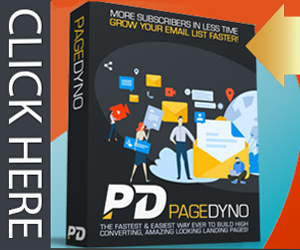The Importance of Image Optimization for Your SEO Efforts

Choosing visual content is an integral part of website development, and it is also an important part of your content optimization for improving search engine placement. In fact, Google has increased the importance of images as a ranking factor.
As a result, image optimization is important for your SEO efforts. This article will go over what image optimization is, why it is crucial to optimize images on your website, and how you can do it effectively.
What is image optimization?
Image optimization essentially means creating visual content with the best quality possible while being as small in size as possible.
There are three aspects of image optimization:
- Resizing the imaging while maintaining high quality
- Cashing images to increase loading speed
- Optimizing images for SEO using relevant keywords
Why is image optimization important?
There are several reasons why optimizing visual content on your website is essential:
- Page loading speed—Large images can slow your website considerably. Given that visitors don’t want to spend more than a few seconds waiting for a page to load, making sure nothing is crippling your website loading time is critical. Smaller-sized images will increase your loading speed and keep your potential customers on your website longer.
- User experience—If your website visitors have to wait too long for your pages to load, it hardly offers the best user experience. That doesn’t mean you should eliminate images from your content. They are there to make the aesthetics more pleasing and to break long blocks of text to improve readability. All that contributes to user experience, which happens to be an essential ranking factor.
- SEO—Optimizing your images using alt tags and captions that include relevant keywords helps those images rank in image searches on Google and other search engines.
These three are inextricably connected. Both page load speed and visual aspects contribute to the user xperience, which search engines reward with a better ranking. At the same time, the use of relevant keywords and phrases also contribute to the ranking. They work together to build up your search engine rank.
To see a concrete example of why image optimization is necessary, evaluate the results your SEO efforts before your images are optimized and after. It’s an interesting way to measure SEO success and see how you are doing.
Of course, you need to have a complete SEO strategy; image optimization isn’t the whole story, but every little improvement contributes to success, and images are one factor that can help you rank better.
How to optimize images on your website
As we have mentioned, you should optimize images in terms of size, keywords use, and caching.
Here are some actionable tips that can help you optimize visual content on your pages:
- Choose the suitable image format
- Reduce the size of the images
- Use keywords to name the image files
- Add captions and alt tag descriptions
- Cache images
Choosing the suitable image format
There are many different formats you can opt for, and these are the most common ones:
- JPEG—This is a suitable format for most images you use on your website. The only ones it won’t work for are
those with a transparent background (logos or line drawing, for instance). JPEG format is ideal because it allows you to reduce the size of the image while keeping its quality - PNG—When JPG won’t work, PNG comes to the rescue. This format is suitable for images with a transparent background, which don’t have a lot of colors but may have a lot of text. The issue with PNG is that it requires a bigger file size.
- TIFF—This format is the absolute winner when it comes to image quality, but it comes with a cost—the file sizes are substantial.
- GIF—Like JPEG, it is possible to compress GIF images. The problem is that their color range is pretty limited, which makes this format a poor choice for photography. Still, it is a perfect option if you want to include some animation on your website
Resizing the images
When it comes to image size, there are two things to keep in mind:
- The image size shouldn’t be beyond what a visitor can see on the page
- The size should be small enough to load fast and large enough to be clear.
There are many tools you can use to resize images. Some of them are free, and some of them require a fee. The most popular (and possibly the best) tool is Adobe Photoshop, but it comes with a hefty price tag. It allows you to compress most of the image formats. It also lets you see immediately how the compression affects the image.
Using keywords
The image file name is an important factor because Google crawls the file name of the images.
Instead of leaving the default name of the image file (e.g., dsc3984734.jpg), rename the file to something descriptive that contains the relevant keyword (e.g., if you are posting a photo of a cat, rename the file to grey-shorthair-tabby.jpg). Be careful not to be spammy, though.
Adding captions and alt tag descriptions
Captions and image alt tags are another important SEO opportunity. This is where you can add more keywords and help Google and other search engines understand what the photo and your content are about.
Moreover, if an image fails to load, an alt tag, aka text alternative, will be displayed. Otherwise, nothing is visible but an empty space. Alt tags are also crucial for people with impaired vision because it tells them what’s in the picture. That increases your website’s accessibility and user experience, which helps your overall ranking (both for images and your website).
Here is what good image optimization alt tags look like:
- Plain, descriptive language (similar to what you do when you rename the file)
- If the image contains a number, include it in the tag
- Include relevant keywords (but do so naturally)
Captions should follow the same logic, but they should be more engaging to the reader. They are short descriptions of a photo that can improve your SEO and image searchability.
Caching
Image caching is the most effective image optimization tactic.
Image files are stored within a visitor’s browser cache when caching is enabled. Whenever this file needs to be accessed again, it won’t have to load from scratch. Instead, the files are already stored, and the loading speed improves.
Another option is proxy caching, which means that image files are stored on the point of presence (PoP) servers. That considerably speeds up the page loading time.
Caching is particularly beneficial if you have several images repeating on multiple pages on your website (such as logos).
Conclusion
Even though images aren’t the main focus of your site, optimizing them is important for your SEO efforts. Images must be in a suitable format and the right size to load quickly. It would be best if you also worked on their metadata (alt text, title, and caption) to help search engines identify them. It’s a bit of effort, but it contributes to your SEO success so don’t neglect image optimization.
Understand the importance of image optimization for your SEO efforts. Learn what it is and how to do it effectively.
Author: Jassica Mendez
Comments are closed.




